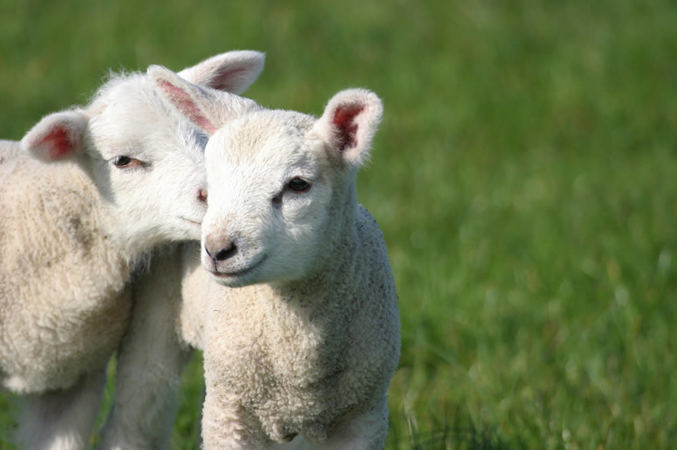Good animal welfare depends on three components:
- Physical well-being
- Mental well-being
- Natural living.
In intensive quail farms, all three of these are compromised by barren housing systems, overcrowding and lack of cover. There is no species-specific legislation protecting quail.
Welfare issues for quail
Housing
Battery cage systems

Many quail, both meat and egg laying birds, are kept in battery cages similar to those that are now banned for egg laying chickens. These are barren wire cages that do not allow the birds to properly perform their natural behaviours, such as foraging and dustbathing. When quail are startled they fly up and hit their heads on the roof of the cages.
Intensive barn systems

Quail are often reared in large barns, where thousands of birds are kept in overcrowded, barren conditions. These systems are used mostly for quail reared for meat. Egg laying quail are kept in barns on some farms but this is less common because egg collection is more difficult; quail will lay their eggs in the litter rather than in a designated ‘nest’ area.
Overcrowding
One thing that both battery cage and intensive barn systems have in common, is a lack of space for the birds. Each quail may have as little space as the size of a drinks mat to live in. This means there is not enough space for natural behaviours, and resting quail are frequently disturbed by others walking over, or landing on, them. This is stressful for the birds and increases the risk of aggression and feather pecking.

Overcrowding quail in barn systems means the litter becomes dirty very quickly, increasing the risk of painful skin irritations. It also makes health checking of individual birds more difficult.
No cover
As wild quail spend most of their lives hidden among the grass, having cover from potential predators is important for them. The barren, open conditions of intensive farms do not provide quail with any cover, and they are easily startled by farm workers.
Higher welfare alternatives for quail
A small percentage of farms are rearing quail in higher welfare conditions.
Higher welfare indoor systems
Some indoor systems give quail more space, natural light and straw bales for enrichment. This allows more opportunity for natural behaviour.

Free range quail farms
In the UK and France, there are some examples of quail being kept ‘free range’. For example, on one small scale egg farm in the UK, quail have access to a shed and an outdoor aviary during the day. They are able to hide in the grass, and have sand boxes to dust-bathe in.

A roof over the aviary is used to stop quail from flying away, and to protect them from predators. This is made from a flexible netting to prevent injury if the quail fly into it.


